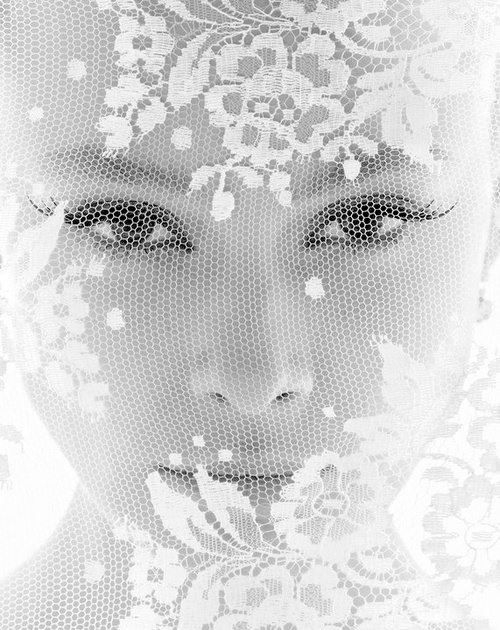 |
| Matthew Tindal |
Matthew Tindal, the English jurist, Whig propagandist, and deist, was born at Beer Ferris, Devonshire, the son of John Tindal, a minister. After an early education in the country, he proceeded to study law at Oxford, first at Lincoln College and later at Exeter College. In 1678 he was elected to a law fellowship at All Souls’College. In 1679 he received the BA and the BCL degrees and in 1685 the DCL.
In 1685 he was also admitted as an advocate at Doctors’ Commons, a society of ecclesiastical lawyers, with a pension of £200 a year for the remainder of his life. While at Oxford and under the influence of the high churchman George Hickes, he defected from the Church of England and became a Roman Catholic for a brief period, but he recanted in 1688.
Soon thereafter, he began to publish a long series of tracts and books, culminating in 1730, when he was over seventy years old, with Christianity as Old as the Creation. Frequently called “the deist’s Bible,” this work elicited more than 150 replies, including Bishop Butler’s famous Analogy of Religion (1736).
 |
| Dr. Edmund Gipson |
At Oxford, Tindal’s enemies accused him of gluttony but granted that he was so abstemious in the drinking of wine that he frequently outsmarted them in argument. Dr. Edmund Gipson, bishop of London, however, won a posthumous “victory” over Tindal when he managed to acquire the manuscript of a second volume of Christianity as Old as the Creation and deliberately burned it. The same forged will (probably by Eustace Budgell) that made this action possible also deprived Tindal’s nephew of his property.
Tindal died stoically in 1733 and was buried in Clerkenwell Church, London. Without question the most learned of the English deists, Tindal consistently referred to himself as a “Christian deist.”
Early Political Publications
Tindal did not begin to publish until he was middle-aged. A first series of tracts, Essay of Obedience to the Supreme Powers (1694), Essay on the Power of the Magistrate and the Rights of Mankind in Matters of Religion (1697), The Liberty of the Press (1698), and Reasons against restraining the Press (1704), all showed low church and Miltonic influences.
 |
| Early Political Publications |
Tindal first gained notoriety with The Rights of the Christian Church Asserted, against the Romish, and all other Priests who claim an Independent Power over it (1706), which brought over twenty answers. A sequel, A Defence of the Rights of the Christian Church (1709), was condemned by the House of Commons and burned in 1710 by the common hangman.
These early works are strongly Whiggish, anti-authoritarian, and anticlerical in tone; they argue for freedom of the press and for general toleration (except for atheists)—principles that were to be even more forcefully urged in Christianity as Old as the Creation.
For his radical political view that although the magistrate has power to legislate in the area of religion, he has no authority to compel conformity and that persecution of nonconformity not only violates natural law but is also futile, Tindal, like many other deists, was branded by the orthodox as “Spinozan.”
“The Deist’s Bible”
 |
| The Deist’s Bible |
Christianity as Old as the Creation: Or, The Gospel A Republication of the Religion of Nature appeared in 1730 with subsequent editions in 1731, 1732, and 1733; in 1741 it was translated into German by Johann Lorenz Schmidt, a writer in the Leibniz-Wolff tradition.
Although the work makes frequent mention of John Locke, it is fundamentally rationalistic, and it is the rationalistic side of Locke that is emphasized—that morality is capable of demonstration and is therefore true, that whatever is known to be true on the basis of reason cannot be falsified by revelation, that the Bible must be read like any other book, that without reason any religion can be held to be true because of the power of tradition.
As is implied by the subtitle, Tindal’s thesis is an elaboration of the proposition from Dr. Thomas Sherlock, bishop of Bangor and later of London, quoted on the title page: “The Religion of the Gospel is the true original Religion of Reason and Nature.... And its Precepts declarative of that original Religion, which was as old as the Creation.”
 |
| Samuel Clarke |
Citation from the rationalistic orthodoxy of such latitudinarians as Archbishop Tillotson, Samuel Clarke, and Thomas Sherlock, a deceptive device frequently employed by the deists, provides some indication of how close in thought rationalistic orthodoxy and rationalistic deism actually were.
Tindal’s use of Sherlock’s thesis, developed in a dialogue between A (Tindal) and B (an objector to, and a questioner of, A), is entirely negative. The Scriptures,with all the ambiguities that have confused the Church Fathers, the Schoolmen, and modern theologians, are really a work of supererogation. Although never stated in so many words, it is clear that Tindal’s radical anticlericism challenged the validity of all historical religions and established churches.
On the critical and historical side, the Scriptures are examined and attacked by Tindal in great detail to expose the imperfect morality of certain Old Testament heroes and, to some extent, of certain parables of the New Testament.
 |
| Old Testament heroes |
Even worse, according to Tindal, priestcraft and tradition, working together, have corrupted the texts and confused the people. Churches have used the teachings of the New Testament to acquire new members and have then used the teachings of the Old Testament to keep members in line.
Tindal was incensed that priests first tempt men to examine their faith and then punish them for so doing if, perchance, their interpretations differ from those established by tradition and authority. This side of Tindal’s work greatly influenced Voltaire.
On the philosophical side it is Tindal the rationalist, rather than the critic and moralist, who was the “Christian deist,” for Tindal, like Lord Herbert of Cherbury before him, took what Alexander Pope was to call “the high Priori Road.”
 |
| morality and religion |
God is conceived of as the God of reason, and because human nature is inalterable, man’s reason has known His being and attributes from the beginning of time. Rational man, then, reasons downward from the divine perfections to morality and religion.
All men, whether of the highest intellect or the meanest capacity, declares Tindal, are equally capable of knowing the immutable law of nature or reason and the religion of nature. In this respect Tindal is close to the more “orthodox” theologians of the waning rationalist or latitudinarian school in Britain represented by Archbishop Tillotson, Samuel Clarke, and Thomas Sherlock.
The book concludes with Tindal’s statement of his three basic notions about natural religion. First, there are things that show, by their inner nature, that they are the will of an infinitely wise and good God (for example, the relations between God and man, the immutability of morality).
 |
| quest for happiness |
Second, there are things that have no worth in themselves, which are to be considered solely as means (forms of worship, positive regulations and precepts); these are to be used as men see fit in their quest for happiness.
Third, there are things (the vested interests of priestcraft, miracles, “enthusiasm”) so indifferent that they cannot be considered as either means or ends, and if emphasis is placed on them in religious matters, the worst sort of superstition ensues—and superstition is the enemy of true religion.
 |
| intellectual level |
Tindal does not consider the fact that many people are totally incapable of right reason, a point that was dutifully reported by many of his opponents. The philosophical argument of Bishop Butler repudiated rationalism as the chimerical building of the world upon hypothesis in the manner of René Descartes.
The paradoxical and abusive Bishop Warburton was content to dismiss Tindal’s apriorism as “the silliest, and most wretched Error, in an age of Paradoxes.” Tindal is the last and most influential of the British deists who sought to keep the movement on a high intellectual level.
 |
| Bishop Warburton |